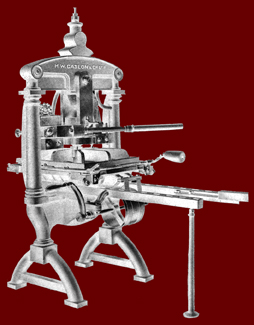

GEORGE STUBBS
Etching - illustration from An Essay towards a Complete New System of Midwifery, by John Burton (York 1751)
FURTHER INFORMATION ON PAGE TWO

GEORGE STUBBS
Stipple engraving from the Comparative Anatomical Exposition, etc. 19 1/8 x 14 3/4 inches.
For more information see PAGE TWO of this intaglio section

GEORGE STUBBS
Mezzotint - a Hound, 1788
There is a description of the mezzotint process in INTAGLIO PAGE TWO
WILLIAM HOGARTH: engraved print
Harlot's Progress 1831; Hogarth depicts the innocent Moll just arriving from the countryside being met by a notorious 'madame'. The intaglio line was engraved rather than etched onto copper plate. However, certain areas of prints made at this time may also have been etched in order to deepen and broaden the line and thus giving a stronger emphasis to the line.
'Marriage à la Mode' was another of Hogarth's series of prints depicting the horrendous state of the institution of 'marriage' in eighteenth century England. Hogarth uses symbols such as the dog and the overturned chair to enhance the story.


GIOVANNI BATTISTA PIRANESI
Piranesi (1720 - 1778) was famous for his etchings of Rome and of the highly imaginative 'prisons'.
THOMAS ROWLANDSON
Thomas Rowlandson (1756 - 1827) produced a number of sets of prints each in the form of a series which told a tale based on social observation such as 'Tour of Dr Syntax in Search of the Picturesque'. These were mostly published by Rudolph Ackermann and the plates were sometimes etched by Rowlandson himself. Aquatint was added to give tone and the colour was added by hand.

Henri Matisse:
etching - illustration to Mallarmé, Poésies 1932

Printing intaglio in the printmaking studio of Anglia Ruskin University 1997
One of the large etching presses which uses the powerful pressure of the large steel roller to force the etching blanket and therefore, the paper, into the etched lines.

Suzanne's prints were created through the use of numerous plates that were cut to form specific shapes and then printed one after the other to create pure shapes and fine bright colours. In some parts "overprinting", that is one transparent colour over another, has created further colours.


Katie Budd; colour etching, 1997
Printmakers often use only one or perhaps two plates to produce colour etchings. For the main part the colour is applied to the plate in distinct areas and then wiped or when two plates are used the colour plate is printed over the main design.Another approach is to use several plates, which are printed one after another in order to produce bright clear colours. By using a template, or tracing one can transfer the design to plates of equal size.
